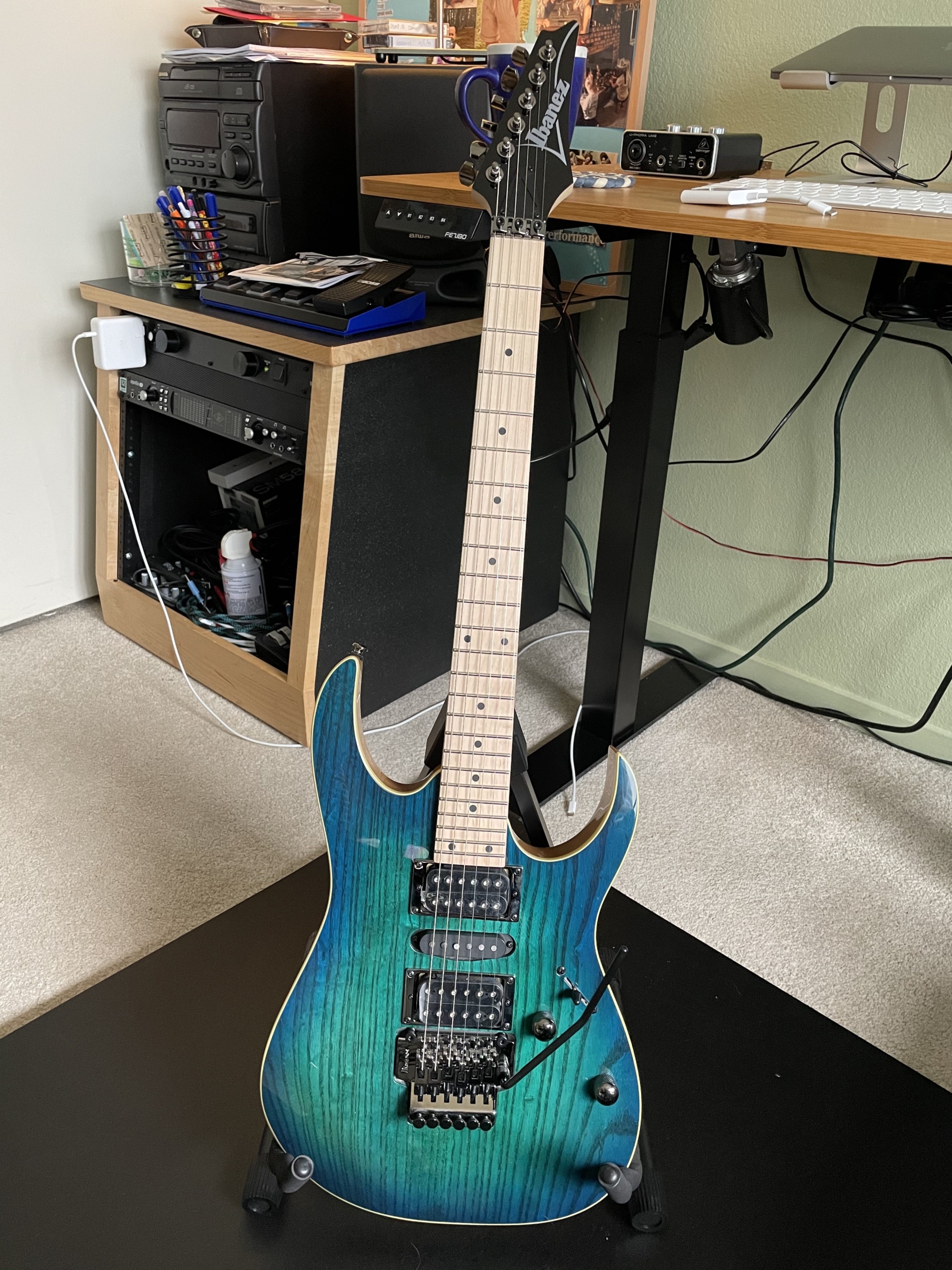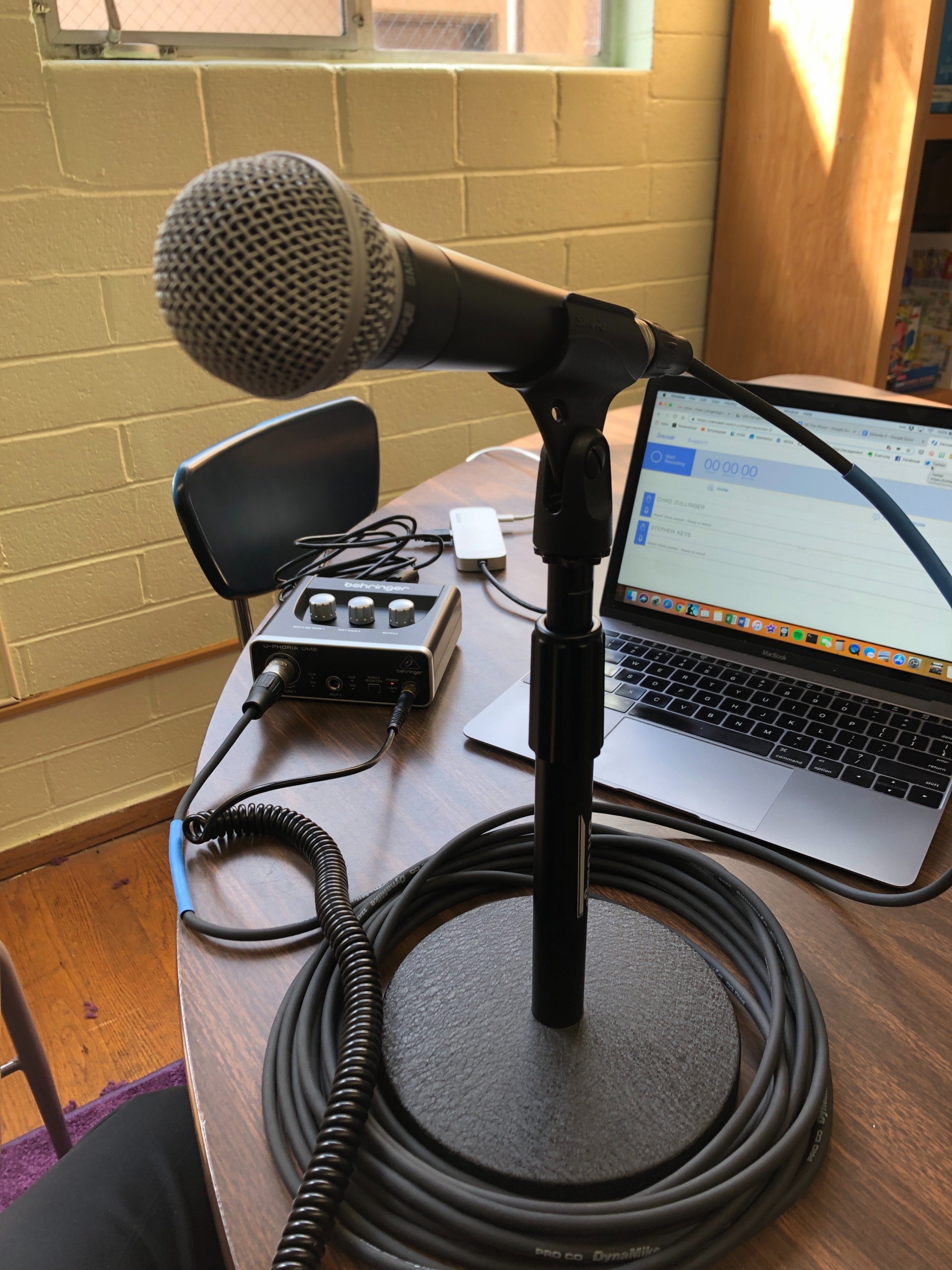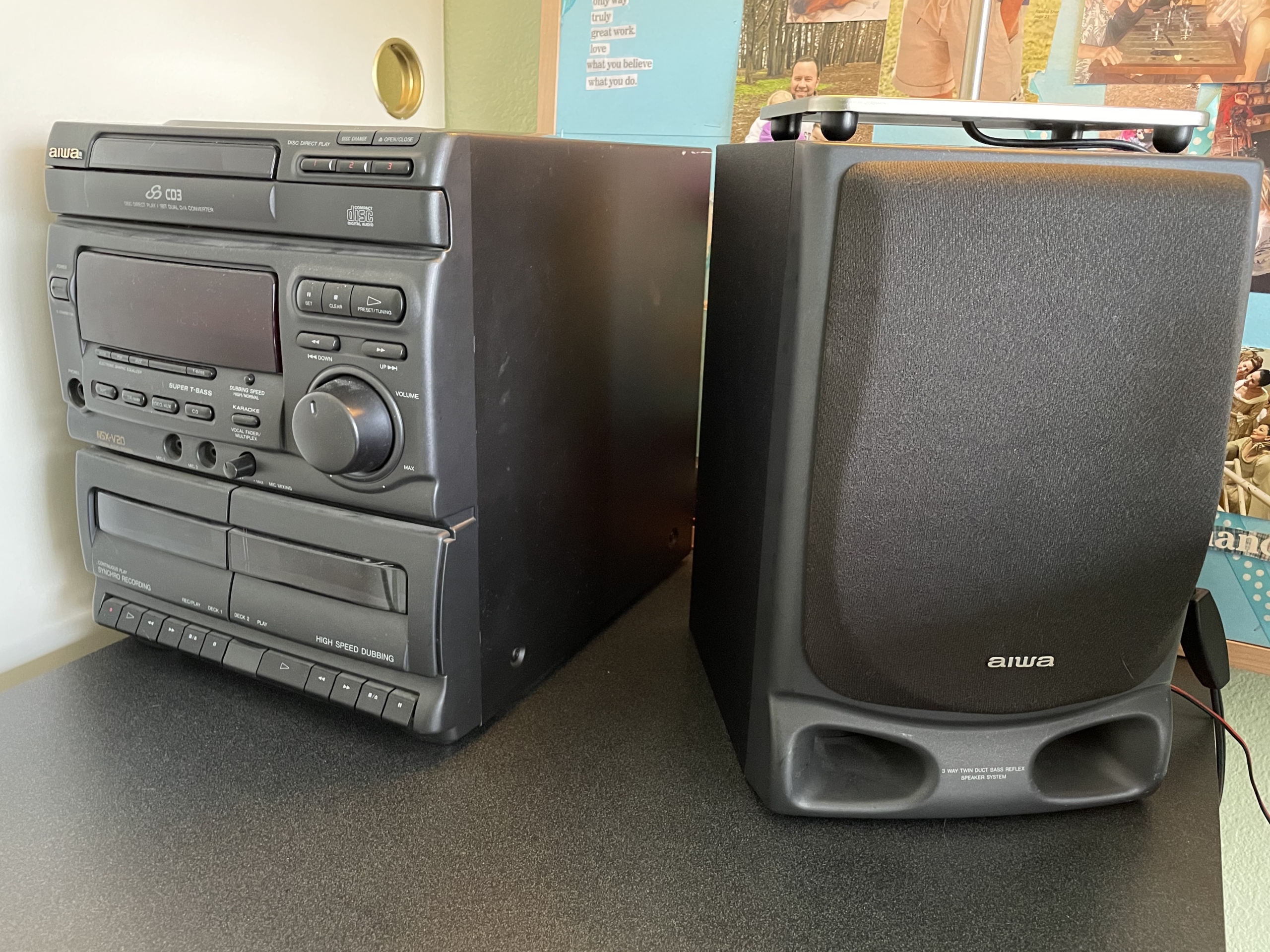This blog post is part of the Recording Studio category and is an ongoing story of my interest in writing, arranging, and recording music. The arc is an interesting one…
In the late 80s, I had an electric guitar, a small practice amplifier, a consumer grade keyboard (maybe a Casio) and the use of a friend’s Tascam 4-track to cut my cassette “demos.” With the family Windows 3.1 licensed PC, I tracked all of the MIDI synth parts in Cakewalk leaving me three channels on the 4-track for analogue instruments. Back then, one track was needed for the SMPTE time code to sync the Tascam with Cakewalk (sounded like a dial-tone).
In 2000, I owned a Marantz 4-Track recorder and a Korg X5 and brought them with me to my first teaching job at Capuchino High School in San Bruno, CA. It was here that I began facilitating student-centered learning activities in technology-based music classrooms. Students in the popular music class I started could write, arrange, and record original music in student-formed bands. Here are a couple of examples from that class: a) song #1 b) song #2
In my position at St. Ignatius College Preparatory, I designed and built a professional grade recording studio (those stories and chronology are shared here). Based on these experiences, I want to share what I’m using as of this blog post at home to continue and write, arrange, and record music.
There are some interesting components here » check them out!
Home Studio Gear
I just picked this Ibanez RG470AHM (May 2021) up as my main electric guitar. This is my first electric guitar purchase since my Steinberger GM4T back in the early 1990s. I’ve always loved the Ibanez necks; low and fast! I use the tremolo bar for expressive purposes so I needed guitar that would stay in tune when I use it.
My personal mic collection is modest at this point, but I own a requisite pair of Shure SM58s. I use this as my go to podcasting mic:
The Behringer UM2 audio interface is nothing spectacular, but gets the job done for my podcast work.
2017, 13-inch, Macbook Pro 2.3 GHz Dual-Core Intel Core i5
(48×24, FEZIBO adjustable standing desk)
I used to own a Boss SE-70 over 20yrs ago (running through a Marshall JMP-1) and when I saw the Boss GT-1 for a fraction of the price here in 2021, I had to pick up this effects unit.
I was the guitarist with effects pedals strung together in a series effects chain, culminating in a weak, mushy signal at the preamp stage. These parallel effects units encapsulated all of my favorite pedals and sounds into one, programmable effects module. “Deep Chorus” was my favorite patch in the SE-70.
Ok. This might look like a (very old…) consumer grade, all-in-one Aiwa CD, dual-cassette, and tuner amplifier, but I’m telling you, these speakers still sound amazing! I know I should have a reputable pair of reference monitors, but I really do love the way this system sounds after 25 years of multiple moves across the country and a handful of offices it’s sat in of past jobs.
Digital Audio Workstation (DAW)
There so many options available for home studio users! In Studio 2001, I became somewhat proficient in Logic, although friends of mine were urging me to take a look at this new, interactive DAW called Ableton (I wish I had!).
I don’t really see much of my work in a home studio environment as professional, so cloud-based DAWs such as Soundtrap and Bandlab work reasonably well for my current needs. Also, cloud-based DAWs allow others to collaborate on tracks and projects and are particularly appropriate for my work with preservice music educators. As of this post, I spend most of my time in BandLab (@chad_z). The more tunes I come up with, I hope to post them here at my Bandcamp page.






